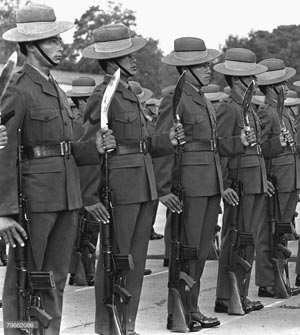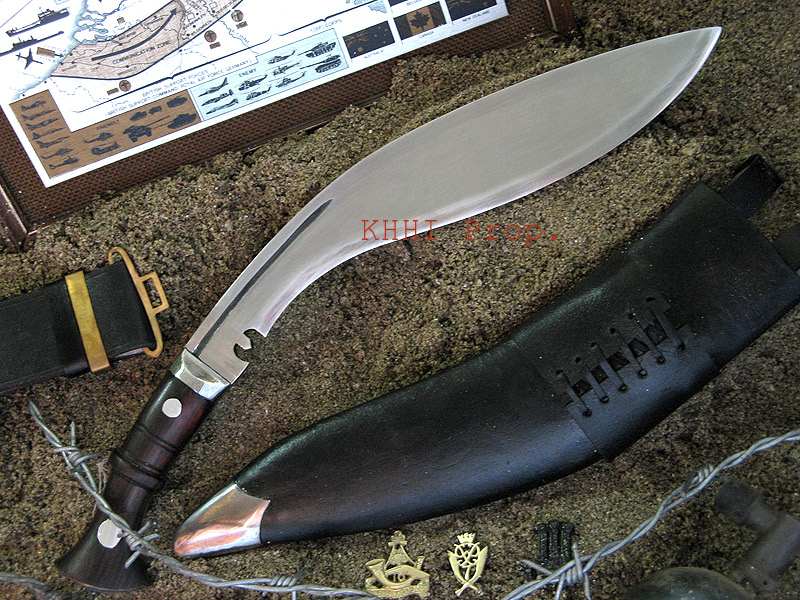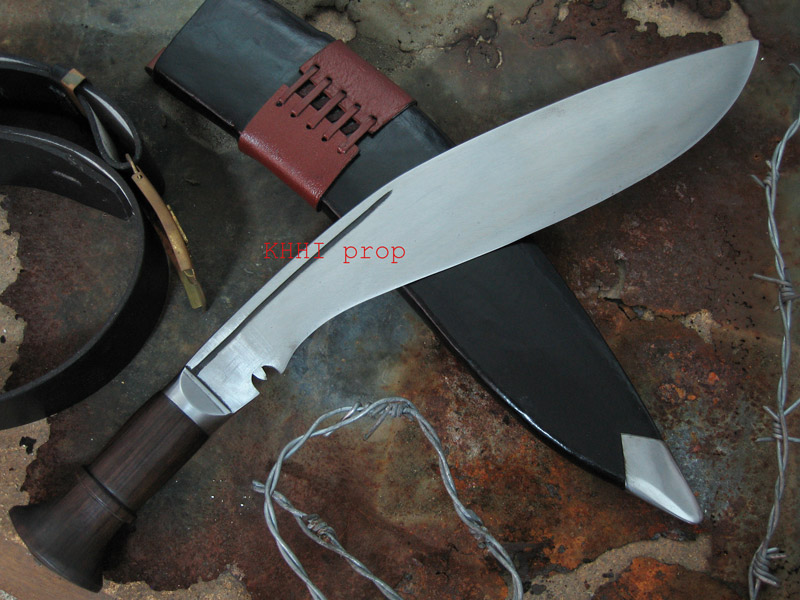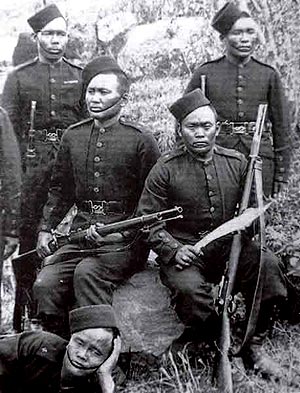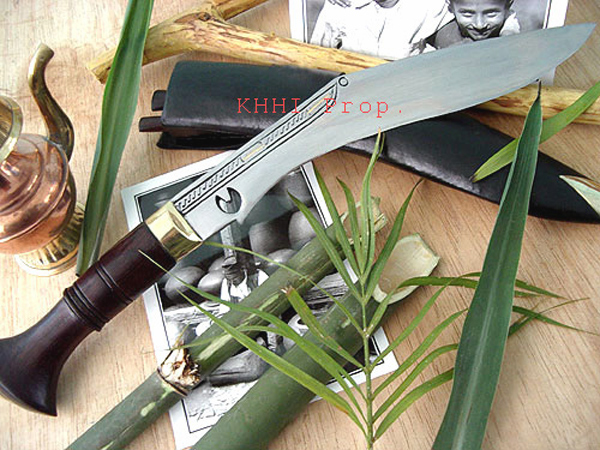Top 5 standard Gurkha Knives of all times
18th April, 2020
Hey folks,
I hope all is well out there and that you are enjoying your free time at home with your family as most of us are in lockdown due the covid19 crisis. Never in my life had I imagined such a terrible time would come and life would literally come to a standstill like this!! All of a sudden it seems like LIFE is NOTHING and Humans are so Fragile. I do hope it gets over very soon and that we all recover form it fast. Let us all be more sensible post the crisis. Anyways I also thought of using this leisure time by doing some research on my favorite topic, Khukuri and Gurkha. So here is a small article from my side on the “Top 5 standard Gurkha Knives of all times”. Please be notified that these are my personal choice which does not necessarily mean all have to agree to it. I did my extensive research prior to preparing it yet there may be few things I may have missed or overlooked or even mistaken. Hence any advise, suggestions or corrections would be hearty welcomed by me. Hope you enjoy reading the article and get to learn something about this amazing knife called the KHUKURI or KUKRI.
Stay Strong.. Stay Safe..
Namaste
SLT (Saroj Lama Tamang)
Founder and MD of KHHI nepal
saroj@thekhukurihouse.com
Collection of the most popular and widely used (issued) Khukuris by Gurkha Army since 1858 (Indian mutiny)...
As we all know Gurkhas (Gorkhas) and Kukris (Khukuris) are inseparable since history (ancient era) and the extra ordinary bond between the two continues to grow and amazes us as we learn more and more about these two amazing elements of the world. Gurkhas have made kukri famous and kukri has made Gurkhas formidable. The flesh and blood alike relationship between the two - a devastating yet a creative force, have over the centuries created remarkable stories of courage, bravery, loyalty, endurance and above all duty over death. The legendary tales and the myths on the man and his unique knife have always left us in wonder, amazed us and given a sense of satisfaction and smiles in the face of millions.
Gurkhas have always carried the knife which they continue to do so with extreme pride and pleasure. No Gurkha is complete without a kukri otherwise he will lose his identity as well as self dignity. Over the centuries many types of kukri knives have been issued to Gurkhas varying in style, length and weight. When Gorkhas were a part of British Indian Army they had their own types. When Gorkha Regiments were separated after Indian Independence in 1947 British Gurkhas and Indian Gorkhas had their own standard issues. The knives were modified and adopted according to the need, the wears and gears of the soldiers and the topography. The modernization and improvement of army and the ever changing time had significant impact on the kukri. Here is the collection of “Top 5 Standard Issue Gurkha Kukris" of all time prepared by KHHI nepal (Saroj Lama Tamang).
#1 Service(Sarkhari)
Famously known as the "Sarkhari" (Government Service) Khukuri, it is the current issue and also the longest reigning official knife. Its history dates back to the partition of Gorkha Regiments in 1947 when the Brigade of Gurkhas were formed by British Army and they decided to have its own service kukri. It was around in late 1950s (ca 1958-60) this kukri, now called as the BSI (British Standard Issue), was officially approved and its issue commenced to the new recruits. Gurkhas Recruitment Camp was established in Dharan and the mass production of the kukri took place within the compounds. The new issued knife was much smaller, lighter and had a complete new look and features. With the modernization of army and upgrade of arms, ammunition and uniform, now kukri was seen more as a recognition factor with sentimental and historical values. After the first introduction of this kurki, large number of variations came along based on the main format. In mid 1980s significant changes were made in shape, size and quality of the kukri and from 1990’s onwards each soldier were handed over 2 x BSI kukris which continues till today. One is a dressed knife and other a field knife. It is a kukri that has survived for far more than a half century hence is has to be #1 in our chart. It has not only indentified a Gurkha over the time but also accompanied the man in his ups and downs, at war and in peace, be it in active service or after retirement.
#2 GI3 (MK2)
It is the third Gurkha issue and the largest standard kukri produced in the history of Khukuri that accompanied the Gorkhas from ww1 to ww2 hence it has to top the chart. The kukri saw action in just about anywhere Gorkhas were deployed for combative objectives from post Great War (WW1) until the end of WW2. It is also famously known as MK2 (Military Kukri) in the kukri community. It’s production started in around 1915 and went well until 1944 which means it successfully covered both world wars and many conflicts in which the Gorkhas were put into. Its lethal swing, decisive blow and the edge’s wrath the opponent were made to face not only deteriorated the enemy's energy but forced them to surrender and shattered their moral. The kukri's reputation as a fearsome weapon and the Gorkha-Kukri force, a power to reconcile with, forever sealed in the face of Earth in this G13 era. With the kukri in hand, Gurkha won many gallantry medals including the VC (Britain’s highest military award).
GI3 (Gurkha Issue 3rd) / world war military kukri 2 (MK2) >>
#3 GI2 (MK1)
A fearsome, faithful and functional standard army knife that pave its way through to victory and glory encrypting its name into the history book forever. G12, the largest of all standard issues, was a devastating force in the hands of the Gurkhas and through their fearful war outcry "Jai Mahakali Aayo Gurkhali" helped them secured any post, place or any objective. G12, also known as standard MK1, was officially issued from early 1900s till WW1 (1915). It was purposed as a main weapon of war during the era. The ravage of the edge was felt in many places like Gallipoli, Mesopotamia, Italy, France, Middle-East etc. The fury of the fine edge was forever engraved in enemy's faith. The man and his beloved knife was not a true story anymore but a mythical duo force that created many legendary tales and myths of bravery, courage, loyalty and honor. GI2 definitely deserves a top place in the ranking.
GI2 Kukri (Gurkha Issue 2nd) / Gurkha knife from pre to end World War (WW1/Great war) era >>
#4 GI1 (Mutiny era)
The Great Indian Mutiny that was sparked by the cartridge issue and something that was long overdue since people (natives) were completely unhappy with the East Indian Company (EIC) was finally suppressed by the company in mid 1858. After the mutiny British Crown (Government) took over EIC and brought many reforms and adjustments in the governing policies, rules, law and order. Among them Military Reform was key and it was now better institutionalized by the government. British heavily increased the native British population in the army which was just at 1:5 ratio before. It also significantly raised the number of 3rd army who had thoroughly supported the company during the mutiny like Gorkhas and Seikhs along with significant power, role and authority. Gorkhas who were just like a mere back up army until the mutiny was standardized and major changes were brought about to make the unit more effective, powerful and a vital part of the British Indian Army. In the process Gorkhas were modernized with better wears and gears and upgraded from Sepoy grade to Rifleman to give a distinguish role and respect. “Khukuri” was made an integral part of their official uniform and its issuance commenced from this era (ca 1859-60).

GI1 (Gurkha Issue 1st) ; The First Gurkha Issue Kukri; a warrior’s pride...
The GI1 KUKRI >> although there are no documents and official records of the knife, it must have been in the line of already popular and in use model when we carefully observe the various contemporary photos and paintings available. The official blade size was probably around 13-14” having slender and more curved profile, with longer wooden handle about 6-7” and came with a sheath having belt holder and 2 small knives, Karda and Chakmak. The new official issue highly matched with the models used by Gorkhas in Anglo-Nepal wars. Many of the kukris of the era displayed in various museums exceptionally pair up with many images seen of Gorkhas with kukri after the Munity. However this is just an assumption which cannot be independently verified since the kukri was either never documented or its records lost in time and as life moved on. The kukri saw active action in various fonts and objectives like in Punjab Frontier, Afghan War 1878-80, Kabul 1879, Kandahar 1880, Tirah, Chitral and as far as Burma (1885-87) and China 1900 etc. This service kukri had to top the chart due to its direct and indirect involvement in the most crucial event (turning point) in the history and development of British, India, Nepal and the Gorkhas themselves.
#5 Chainpure
This kukri has been gaining popularity over these years after the new Gurkha recruits started picking up the kukri as their no. 2 knife (field and fight knife). In Gurkha Army, for field, training, exercise and even for combative purpose soldiers can have their choice and most Gurkhas would prefer the ChainPure. The kukri has seen substantial action in the desert fronts of Middle East, Iraq and Afghanistan where RGR (Royal Gurkha Rifles) were/are deployed. One of the famous incidents where Chainpure kukri was used was in railway train near Chittaranjan, West Bengal, in which Indian Gorkha, Bishnu Shrestha, fought alone with 40 bandits, killed 3 of them and saved a woman from getting gang raped. The Chainpure being the latest favorite of the Gurkhas had to hit the chart, no doubt!!
ChainPure Domestic Khukri (new Gurkha Front) >>


